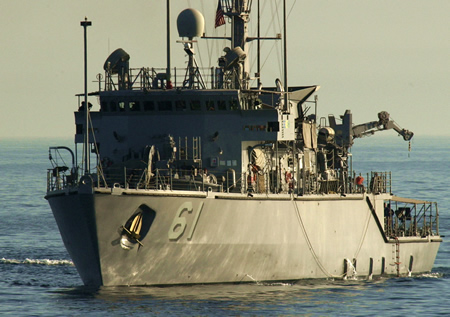Navy on Course to Boost STEM Learning

The U.S. Navy now spends $60 million a year on STEM education, but Navy Secretary Ray Mabus wants to double that amount over five years, officials say.
The expanded effort is directed particularly at elementary and middle school students in rural and urban communities – not just areas with existing naval facilities – and at university freshmen and sophomores, too many of whom now drop out of science and engineering. Teacher education is also a priority.
One Navy-funded program is the Iridescent Family Science Project, serving grade 3-7 students in New York’s Harlem, Brooklyn, Bronx and Queens. It draws instructors from science and engineering students from the Cooper Union and the New York Hall of Science. Columbia University is expected to become a partner as well. Parents are required to participate. Additional Family Science programs are in South Central Los Angeles and Oakland, Calif.
Mabus has put the Office of Naval Research, headed by Rear Adm. Nevin P. Carr, in charge of science, technology, engineering and math programs. ONR was already the source of three-fourths of Navy STEM spending.
Carr is assisted by Michael Kassner, ONR’s director of research, who is an engineering professor on leave from the University of Southern California. Kassner says he’s eager to hear from educators about worthwhile programs. He stresses the importance of measurable results. He also emphasizes the need for sustained student engagement. Too many out-of-school STEM programs, he says, provide students with just a brief exposure to science and engineering with relatively low impact.
If programs in one location are proven to work, they can serve as a template for other regions, Kassner said during a conversation on the sidelines of at ASEE’s Engineering Research Council meeting this week in Washington.
Among ONR-funded STEM programs outside New York is the Youth Exploring Science program in St. Louis, Mo., run in collaboration with the St. Louis Science Center; a Baltimore program conducted with the Boys and Girls Clubs of America; Expand your Horizons for girls in Annapolis, Md.; a program at the Naval Postgraduate School, and one at Naval Air Weapons Station China Lake, in California. ONR is also working on linking the Navy’s existing Sea Perch program, which engages K-12 students in underwater robotics, with the rural and nationwide 4-H Clubs. New Programs are being established in Miami and the Gulf Coast, as well.
The Navy’s STEM expansion is driven by concern that U.S. schools and universities won’t be able to produce enough well-trained scientists and engineers to meet the military’s and the nation’s technology needs, particularly as many science and engineers are nearing retirement age.
Filed under: K-12 Education News
Tags: Office of Naval Research (ONR), Outreach, Outreach for Schools, STEM education, STEM subjects, U.S. Navy








